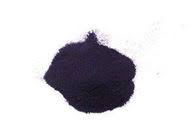Top Manufacturers of Indigo Dye for Textile and Fashion Industries
The World of Indigo Dye An Overview of Manufacturers and Their Craft
Indigo dye, with its deep blue hues and historical significance, has captivated cultures around the globe for centuries. From ancient Egyptian textiles to modern-day denim jeans, this natural dye has played a vital role in the textile industry. Today, numerous manufacturers specialize in indigo dye production, catering to a diverse range of applications, including fashion, interior design, and artistry. In this article, we will explore the world of indigo dye manufacturers, their processes, and the significance of this timeless color in contemporary settings.
The Origins of Indigo Dye
Indigo has been used as a dye for thousands of years, with its origins tracing back to civilizations in India, Egypt, and China. The dye is derived from the leaves of the indigo plant, primarily from species such as Indigofera tinctoria and Persicaria tinctoria. The process of creating indigo dye is labor-intensive and requires fermentation to convert the indigo precursor found in the leaves into a dye that can be used for coloring textiles.
The historical importance of indigo is notable; it was once more valuable than gold. This led to the establishment of trade routes and the foundation of economies in certain regions. Today, the production of indigo dye still holds cultural significance, particularly in countries like India, where traditional techniques have been preserved and passed down through generations.
Indigo Dye Manufacturers A Diverse Landscape
With the resurgence of interest in sustainable and natural dyes, numerous manufacturers have emerged, some of which focus solely on indigo. They vary from large-scale producers to small artisanal workshops, each with a unique approach to dyeing and an array of products.
1. Commercial Manufacturers Many commercial dye manufacturers produce synthetic indigo, which is significantly cheaper and offers a fuller range of color consistency. Companies like DyStar and Huntsman have established themselves as leaders in this space, providing indigo dye for various industrial applications. These manufacturers use advanced technology to create synthetic indigo that meets the demands of the global textile market.
2. Natural Dye Producers A growing number of manufacturers are focusing on natural indigo dye due to rising consumer demand for organic and environmentally friendly products. Companies such as Korders and Indigofera specialize in creating natural dyes using traditional methods. The shift towards natural indigo promotes sustainable practices, supporting not only the environment but also local farmers who cultivate indigo plants.
3. Artisanal and Small-Scale Producers
In recent years, there has been a resurgence of interest in artisanal and craft dyeing techniques. Small-scale producers, often rooted in local communities, focus on hand-dyeing textiles using natural indigo. These manufacturers emphasize the cultural heritage of indigo dyeing, often incorporating traditional methods into their processes. Workshops and co-operatives, such as those in Japan and India, keep indigo traditions alive while producing unique, handcrafted textiles.
indigo dye color manufacturers

The Process of Indigo Dyeing
The indigo dyeing process varies based on the manufacturer and technique used
. However, the general steps involve1. Preparation of the Indigo Leaves The leaves are harvested, fermented, and processed to extract the indigo pigment.
2. Reducing the Indigo The indigo is reduced in a fermentation vat to create a soluble form called indigo white, which can easily attach to fibers.
3. Dyeing the Fabric The fabric is submerged in the dye vat. The more times the fabric is dipped, the deeper the blue color becomes. After dyeing, the fabric is exposed to air, oxidizing the indigo and revealing its vibrant blue hue.
4. Fixation and Finishing Finally, the dyed fabric is treated to ensure the color fastness and durability.
The Cultural and Environmental Impact
Indigo dye is not just a color; it represents a cultural heritage that connects generations of artisans. Supporting indigo dye manufacturers, particularly those producing natural indigo, helps preserve these traditions and promote ethical practices in the textile industry.
Moreover, the growing awareness of the environmental impact of synthetic dyes has led to an increased focus on biodegradable and sustainable alternatives. By choosing natural indigo, consumers can contribute to a more sustainable fashion future.
Conclusion
Indigo dye continues to be an essential element of textiles around the world, with a diverse landscape of manufacturers specializing in its production. From large commercial operations to small artisanal workshops, each contributes to the rich tapestry of indigo dyeing. As we move towards a more sustainable future, the craft of indigo dyeing serves as a reminder of the intersection between tradition, artistry, and environmental stewardship.
-
The Timeless Art of Denim Indigo Dye
NewsJul.01,2025
-
The Rise of Sulfur Dyed Denim
NewsJul.01,2025
-
The Rich Revival of the Best Indigo Dye
NewsJul.01,2025
-
The Enduring Strength of Sulphur Black
NewsJul.01,2025
-
The Ancient Art of Chinese Indigo Dye
NewsJul.01,2025
-
Industry Power of Indigo
NewsJul.01,2025
-
Black Sulfur is Leading the Next Wave
NewsJul.01,2025

Sulphur Black
1.Name: sulphur black; Sulfur Black; Sulphur Black 1;
2.Structure formula:
3.Molecule formula: C6H4N2O5
4.CAS No.: 1326-82-5
5.HS code: 32041911
6.Product specification:Appearance:black phosphorus flakes; black liquid

Bromo Indigo; Vat Bromo-Indigo; C.I.Vat Blue 5
1.Name: Bromo indigo; Vat bromo-indigo; C.I.Vat blue 5;
2.Structure formula:
3.Molecule formula: C16H6Br4N2O2
4.CAS No.: 2475-31-2
5.HS code: 3204151000 6.Major usage and instruction: Be mainly used to dye cotton fabrics.

Indigo Blue Vat Blue
1.Name: indigo blue,vat blue 1,
2.Structure formula:
3.Molecule formula: C16H10N2O2
4.. CAS No.: 482-89-3
5.Molecule weight: 262.62
6.HS code: 3204151000
7.Major usage and instruction: Be mainly used to dye cotton fabrics.

